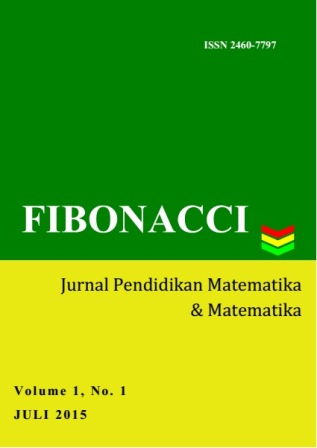PENJADWALAN PERKULIAHAN OTOMATIS
Main Article Content
Abstract
Article Details
Authors who publish with this journal agree to the following terms:
- Authors retain copyright and grant the journal right of first publication with the work simultaneously licensed under a Creative Commons Attribution License that allows others to share the work with an acknowledgement of the work's authorship and initial publication in this journal.
- Authors are able to enter into separate, additional contractual arrangements for the non-exclusive distribution of the journal's published version of the work (e.g., post it to an institutional repository or publish it in a book), with an acknowledgement of its initial publication in this journal.
- Authors are permitted and encouraged to post their work online (e.g., in institutional repositories or on their website) prior to and during the submission process, as it can lead to productive exchanges, as well as earlier and greater citation of published work (See The Effect of Open Access).
References
Anbulagan, Setiadi R. (2001). “Pemecahan Masalah Penjadwalan Kuliah di Perguruan
Tinggi dengan Menggunakan Teknik Intelligent Search”. Prosiding Seminar
Nasional Kecerdasan Komputasional II; Universitas Indonesia, 16-17 Oktober
Depok, Universitas Indonesia.
Anbulagan, Winata N. (2001). “Penggunaan Tabu Search dalam Penjadwalan Kuliah di
Perguruan Tinggi”. Prosiding Seminar kecerdasan Komputasional II; Universitas
Indonesia, 16 – 17 Oktober 2001. Depok, Universitas Indonesia.
Carter MW, Tovey CA. (1992). “When Is The Classroom Assignment Problem Hard?”.
Operation Research 40, hal: S28 –S39.
Daskalaki S, Birbas T, Housos E. (2004). “An Integer Programming Formulation for A
Case Study in University Timetabling”. Elsevier 153, hal: 117 – 135.
Fizzano P, Swanson S. (2000). “Scheduling Classes on a College Campus”.
Computational Optimization and Aplications 16, hal: 279–294.
Hillier FS, Lieberman GJ. (1990). Introduction to Mathematical Programming. New
York: McGraw-Hill.
Khairunnisa. 2014. Dinamika Penjadwalan Perkuliahan pada Universitas Islam Negeri
Syarif Hidayatullah Jakarta. International Conference On Education In Muslim
Society (ICEMS) Proceeding: 441 – 456.
Ng PH, Martin LM. (2002). “Classroom Scheduling Problems: A Discrete Optimization
Approach”. The UMAP Journal 23, hal: 57–66.
Papoutsis K, Valouxis C, Housos E. (2003). “A Coloumn Generation Approach for the
Timetabling Problem of Greek High Schools”. Journal of Operation Research
Society 54, hal: 230–238.
Taha, H.A. (1975). Integer Programming: Theory,Applications, and Computations.
New York: Academic Press.
Wagner, H.M. (1985). Principles of Operation Research with Aplications to
Managerial Decisions. New Delhi: Prentice Hall of India.
Wolsey, L.A. (1998). Integer Programming. New York: John Wiley and Sons

